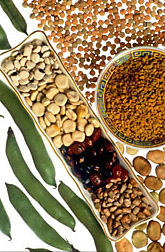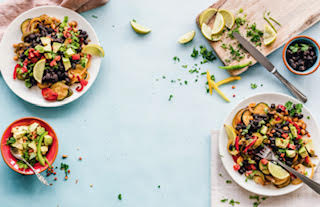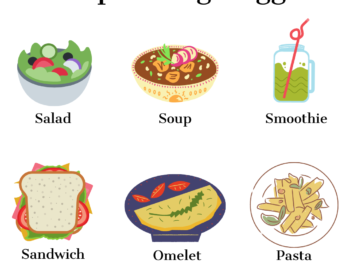It’s a new year and a great time for healthy eating and to try new foods. The foods below are not only trending now but are also healthy, delicious, and versatile. As a nutritionist, I urge you give them a try.
- Cauliflower
Move over kale; cauliflower is the “in” vegetable these days. Cauliflower is a cruciferous vegetable and a member of the brassica family alongside broccoli and Brussel sprouts. It is a nutrition powerhouse, chock full of fiber, vitamin C, vitamin K, and folate. It is also very low in calories; one cup raw cauliflower contains only 25 calories so don’t worry about eating too much.
One reason cauliflower may be making a comeback is because of its versatility. When cooked and soft, try experimenting by making cauliflower “rice or potatoes” to replace actual potatoes or rice.
- Pulses
The United Nations (UN) declared 2016 the International Year of Pulses (IYP). Pulses are comprised of dry peas, beans, lentils, and legumes and are protein-packed and sustainable vegetables. As discussed in the recently released 2015-2020 Dietary Guidelines for Americans, pulses are also excellent sources of dietary fiber and nutrients, including potassium and the B vitamin folate. They also contain iron and zinc and are a terrific protein choice if you are vegetarian or just interested in cutting back on meat.
Adding pulses to your diet is easy. You can enjoy a split pea soup, throw a handful of chick peas into your salad, or make a delicious lentil stew instead of a meat dish. Ready to incorporate more pulses into your diet? Visit pulsepledge.com to take a 10-week challenge and get access to recipes, meal plans and other resources.
- Beets
This long lost vegetable is certainly trending now. Eating more beets is good for you and can certainly help boost your nutrient intake. Beets contain betalains, a potent antioxidant which can help fight off oxidative stress. Beets are also high in fiber, folate, potassium, and magnesium. This naturally sweet and tasty vegetable also contains anti-inflammatory properties, which can help fight chronic disease such as heart disease, hypertension, inflammation and cancer.
- Spiralized Vegetables
Spiralizing is a great way to use veggies in different ways, and can certainly help boost your intake. A “spiralizer” is a spiral vegetable slicer that creates strands (resembling pasta) out of vegetables like zucchini, sweet potato, and carrots. You can swap pasta for spiralized zucchini to save lots of calories. And what I love is that you get to eat a bigger portion. While one cup of cooked linguine contains around 200 calories, two cups of cooked veggies like carrots and zucchini contain under 100 calories. You can also add spiralized veggies to your favorite salad or stir-fry for a healthy side dish. It is a great gadget to add to your kitchen.
- Hemp Seeds
These nutty seeds are rich in protein, fiber, and omega-3 fatty acids. Use them like you would wheat germ or seeds – sprinkle them on yogurt, oatmeal and other cereals for added flavor, crunch, and nutrients. You can also add them to salads and to sautéed vegetables. You can even use hemp seeds instead of bread crumbs to make a healthy crust for fish or chicken.
This post was sponsored by USA Pulses & Pulse Canada.
Photo courtesy of: USDA/ARS, Keith Weller.




